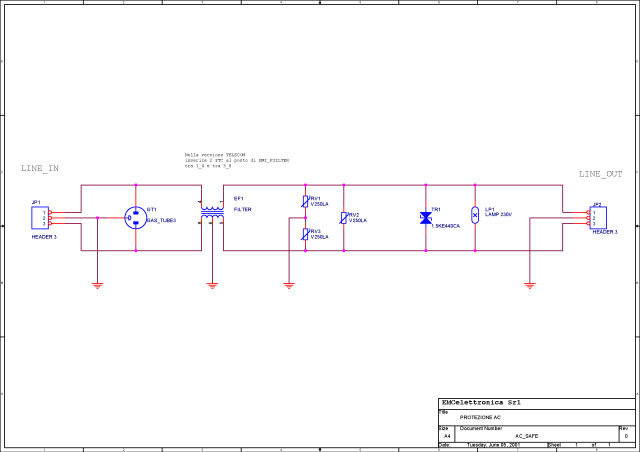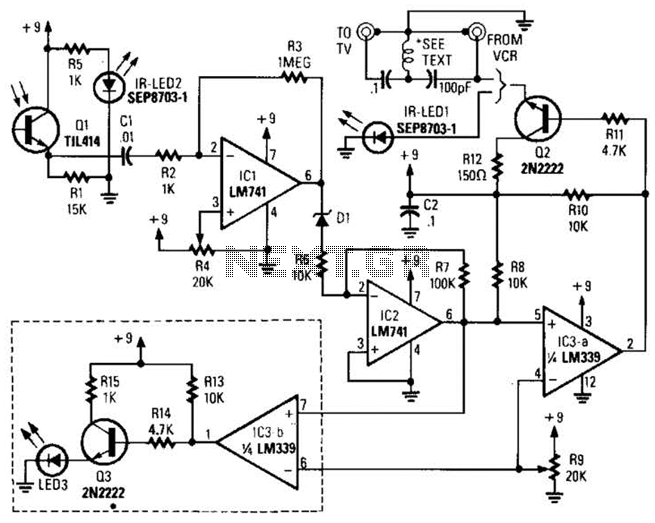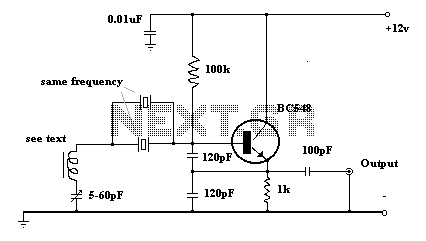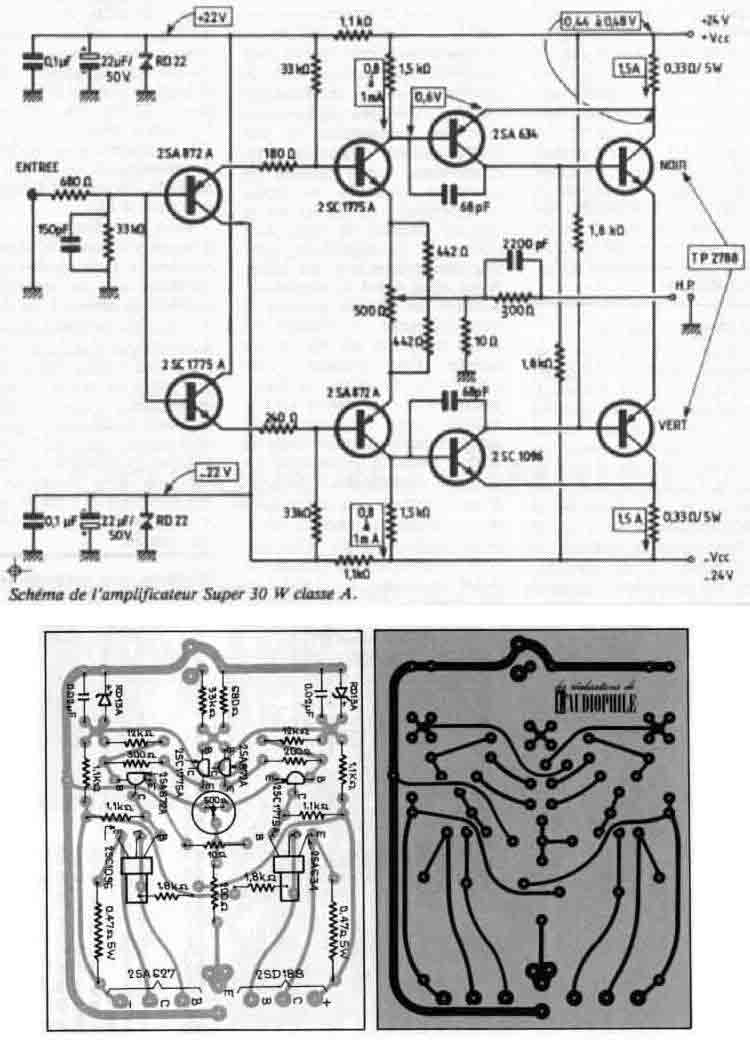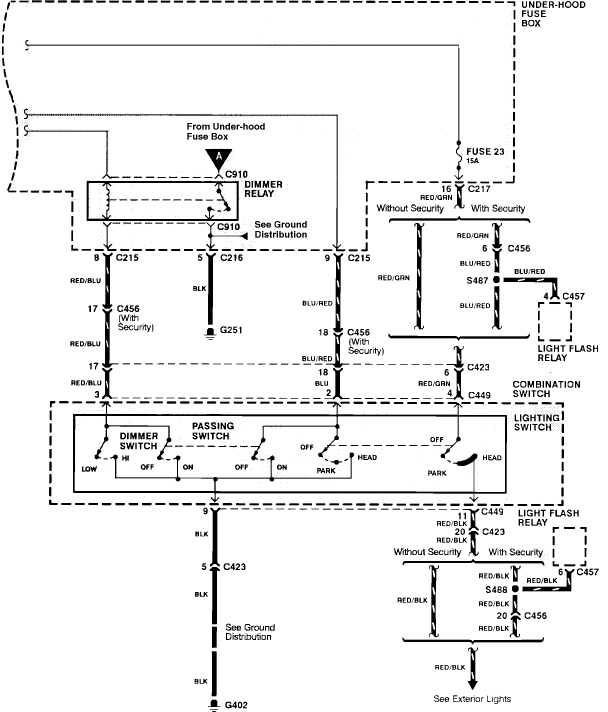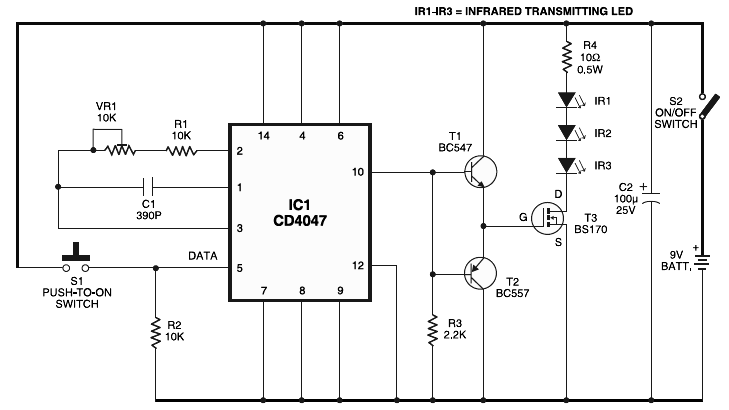
amplifier timer circuit schematic
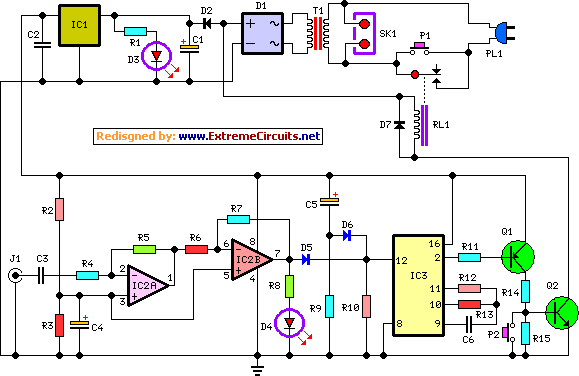
This circuit deactivates an amplifier or any connected device when a low-level audio signal at its input is absent for at least 15 minutes. By pressing P1, the device is powered on, supplying power to any appliance connected to SK1. The input audio signal is amplified and squared by IC2A and IC2B, with the status monitored by LED D4. When D4 lights up, even momentarily, IC3 is reset and begins its counting process anew.
The described circuit operates as an audio signal-based timer and control mechanism. It utilizes an operational amplifier configuration, specifically IC2A and IC2B, to process low-level audio signals. The first stage, IC2A, serves to amplify the incoming audio signal, ensuring that even weak signals can be effectively detected. The amplified signal is then squared by IC2B, which converts the analog waveform into a digital signal suitable for further processing.
LED D4 functions as an indicator, providing visual feedback regarding the presence of the audio signal. When the audio signal is detected, D4 illuminates, indicating that the circuit is actively monitoring the input. This visual cue is crucial for troubleshooting and ensuring the circuit operates as intended.
The timing element of the circuit is managed by IC3, which is configured to start counting only when the audio signal is absent. If the audio signal remains low for the designated period of 15 minutes, IC3 triggers a shutdown sequence for the connected device via SK1. The reset mechanism for IC3 is linked to the state of LED D4; any brief detection of the audio signal resets IC3, preventing premature shutdown.
The switch P1 serves as a manual control to power on the entire circuit, allowing the user to activate the system and connect various appliances to SK1. This design provides an energy-saving feature by ensuring that devices are only powered when needed, based on the presence of an audio signal.
In summary, this circuit effectively combines audio signal processing, timing, and control functions to manage the operation of amplifiers or other devices, ensuring they remain powered only when an audio signal is present. The integration of visual indicators and manual controls enhances usability and reliability in various applications.This circuit turns-off an amplifier or any other device when a low level audio signal fed to its input is absent for 15 minutes at least. Pushing P1 the device is switched-on feeding any appliance connected to SK1. Input audio signal is boosted and squared by IC2A & IC2B and monitored by LED D4. When D4 illuminates, albeit for a very short peak, IC3 is reset and restarts its counting.. 🔗 External reference
The described circuit operates as an audio signal-based timer and control mechanism. It utilizes an operational amplifier configuration, specifically IC2A and IC2B, to process low-level audio signals. The first stage, IC2A, serves to amplify the incoming audio signal, ensuring that even weak signals can be effectively detected. The amplified signal is then squared by IC2B, which converts the analog waveform into a digital signal suitable for further processing.
LED D4 functions as an indicator, providing visual feedback regarding the presence of the audio signal. When the audio signal is detected, D4 illuminates, indicating that the circuit is actively monitoring the input. This visual cue is crucial for troubleshooting and ensuring the circuit operates as intended.
The timing element of the circuit is managed by IC3, which is configured to start counting only when the audio signal is absent. If the audio signal remains low for the designated period of 15 minutes, IC3 triggers a shutdown sequence for the connected device via SK1. The reset mechanism for IC3 is linked to the state of LED D4; any brief detection of the audio signal resets IC3, preventing premature shutdown.
The switch P1 serves as a manual control to power on the entire circuit, allowing the user to activate the system and connect various appliances to SK1. This design provides an energy-saving feature by ensuring that devices are only powered when needed, based on the presence of an audio signal.
In summary, this circuit effectively combines audio signal processing, timing, and control functions to manage the operation of amplifiers or other devices, ensuring they remain powered only when an audio signal is present. The integration of visual indicators and manual controls enhances usability and reliability in various applications.This circuit turns-off an amplifier or any other device when a low level audio signal fed to its input is absent for 15 minutes at least. Pushing P1 the device is switched-on feeding any appliance connected to SK1. Input audio signal is boosted and squared by IC2A & IC2B and monitored by LED D4. When D4 illuminates, albeit for a very short peak, IC3 is reset and restarts its counting.. 🔗 External reference
